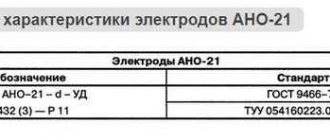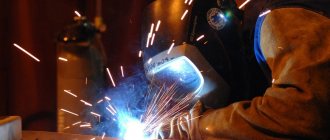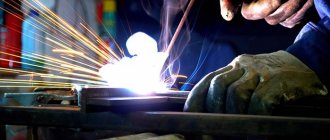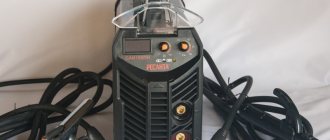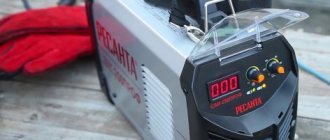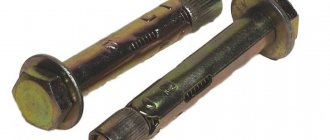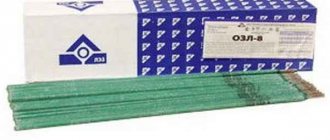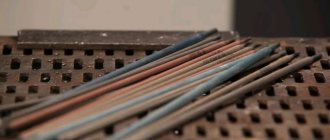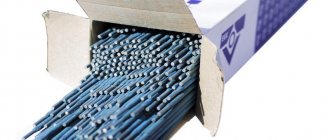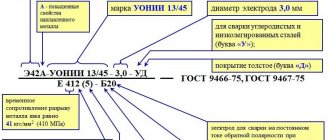TsL-11 electrodes: application and technical characteristics
If you have to deal with stainless steel welding from time to time, then you should definitely know about TsL-11 electrodes. These electrodes are popular when welding alloys and corrosion-resistant steel grades.
Having decent technical characteristics, TsL-11 welding electrodes have found wide application both in industry and in everyday life. These electrodes ensure a strong and corrosion-resistant weld. You can find out exactly what electrodes of this brand are used for and what technical characteristics they have on the website.
Key Features
Stainless steel electrodes TsL-11 are made of cold-drawn wire, the material of which is high-alloy steel SV07X19N10B. A significant amount of alloying additives is designed to compensate for the volume of similar elements that burn out in the base metal when exposed to high temperatures.
Other features:
- the electrodes have a coating of increased thickness (1.45
- rod coating type – basic (calcium fluoride);
- the products provide high stability of the electric arc and minimal metal spattering (up to 5%);
- Due to the characteristics of the coating material (porosity and moisture absorption), the rods must be calcined for 1.5 hours at 320–350 °C before work.
Welding is performed with the shortest possible arc without the use of transverse oscillatory movements of the rod.
Technological features
To obtain a high-quality seam that resists corrosion and can withstand high temperatures in the working environment, it is important to follow the recommendations. Before using TsL-11, they need to be prepared.
The products are heated in a thermal oven for 60 minutes at a temperature of +200 °C (the average value, exact time and t are indicated in the attached instructions or on the packaging).
We recommend reading Description of E42 electrodes for welding
Heat treatment is aimed at reducing the moisture content of the coating - its indicators should not exceed 0.5%. Due to the presence of moisture, unheated rods will not be able to provide a stable electric arc.
Before welding, you need to make sure that the coating is in good condition - there are no cracks, delaminations or dirt on it. Such products should be rejected.
TsL-11 – characteristics
Electrodes of the TsL-11 brand allow you to weld parts in all spatial positions with the exception of vertical from top to bottom.
- For 1 kg of deposited metal there are 1.7 kg of consumables.
- Temporary tensile strength – 539 MPa.
- The relative elongation is 22%.
- The impact strength value is 80 J/cm².
- The deposition rate is 11 g/Ah.
The regulatory requirements that apply to the TsL-11 electrode are GOST 9466-75 and GOST 10052-75.
Description and scope of application
Electrodes are rods made of electrically conductive material designed to supply voltage to the elements being welded. They are made of high-alloy steel SV08Х19Н10Б, necessary for working with manual arc welding.
Used in industry and to solve household problems. When voltage is applied to the parts being welded, they form a strong seam that is highly resistant to corrosion.
Welded rods TsL-11 have a protective coating of class B. It contains carbonate and chemical components with a high percentage of fluorine. The coating should be smooth, without swelling, pores and deep cracks.
Dents and scuffs are allowed in accordance with GOST 9466-75. When the molten calcium fluoride coating crystallizes, the joint does not form breaks, irregularities or other defects.
TsL-11 forms seams that are resistant to nitric and phosphoric acid.
Due to this feature, rods are used for:
- welding of structural parts of boiler units;
- applying seams to pipelines with thick walls;
- connecting stainless steel elements.
They are used in the chemical, space, construction and other industrial sectors.
What metals can you achieve the best results with?
Welding rods TsL-11 are used for joining refractory metals and stainless steel.
The best results are achieved when working with the following types of steel:
- Kh14G14N3T – structural cryogenic;
- 1Х21Н5Т – ordinary corrosion-resistant;
- 09Х18Н12Т – structural high-alloy;
- 12Х18Н9Т – corrosion-resistant, heat-resistant;
- 1Х16Н13Б – heat-resistant, high-alloy.
TsL-11 electrodes, the use of which is permissible at temperatures up to +600 °C, are used for metals with high requirements for the quality of seams. The resulting compounds are resistant to the formation of hot cracks, rust, and aggressive temperature influences (not lower than +500°C).
We recommend reading: Rules for selecting electrodes for welding cast iron
Advantages and disadvantages
Thanks to the main coating, TsL-11 rods have a number of significant advantages. They ensure stable arc combustion, uniform melting of the metal and its stable transfer into the weld pool.
Other benefits include:
- low splash rates - no more than 5%;
- obtaining a compound with the required mechanical properties and chemical composition;
- formation of a plastic seam resistant to mechanical loads;
- low consumption - 1.7 kg per 1 kg of surfacing;
- high process productivity;
- rapid removal of slag;
- minimum volume of toxic gases released.
TsL-11 have no significant disadvantages. These include only periodic sticking of the rods. However, more often this phenomenon is encountered when the operating parameters of the equipment are incorrectly selected. If they are followed exactly, the number of stickings is reduced.
Chemical composition of the deposited metal
As can be seen from the table below, the resulting weld metal contains niobium. The metal is capable of forming superhard carbides. This allows you to obtain a high-strength connection when welding heat-resistant and heat-resistant steels. We also see an extremely low content of harmful impurities in the composition - phosphorus and sulfur.
| Carbon (C) | Manganese (Mn) | Silicon (Si) | Nickel (Ni) |
| 0,05–0,12% | 1–2,5% | <1,3% | 8–10,5% |
| Chromium (Cr) | Niobium (Nb) | Sulfur (S) | Phosphorus (P) |
| 18–22% | 0,7–1,3% | 0,01% | 0,02% |
How to cook stainless steel
Welding corrosion-resistant steels is a complex process that requires both theoretical knowledge and skills from the master. When working with stainless steel, it is necessary to follow welding technology.
Process description:
- The future connection is tacked in several places to increase stability. In this case, the rod is held at an angle of 45-60°.
- The seam is applied with small stitches. You need to act carefully and quickly.
- The resulting surfacing is given time to cool naturally.
The product cannot be cooled forcibly. Crystallization must occur gradually, otherwise there is a high risk of internal stress in the parts being welded. This will reduce the quality of the connection.
Recommended current values
An inverter machine makes it possible to set precise welding parameters for a particular rod diameter and, as a result, obtain an even and high-quality seam. Below are the recommended (average) current values, taking into account the diameter of the electrode and the spatial position of the weld.
| Electrode diameter, mm | Down position | Top position | Ceiling position |
| 2 | 40...55 A | 30… 40 | 30… 40 |
| 2,5 | 55…65 A | 40… 50 | 40… 50 |
| 3 | 70...90 A | 50… 80 | 50… 80 |
| 4 | 130… 155 A | 110… 130 | 110… 130 |
| 5 | 150… 180 A | 120… 160 | – |
The best manufacturers
Domestic factories producing electrodes number in the dozens. Among them there are large enterprises, import-class manufacturers and small companies that produce consumables for their own needs.
Best factories:
- "LEZ" ("Losinoostrovsky Electrode Plant"). For more than 60 years, it has been manufacturing components for welding, cutting and soldering. Products are sold to domestic markets and CIS countries. The company produces a wide range of electrodes, including LEZ TsL-11 rods. The product is packaged in accordance with European quality standards.
- "Penzaelectrode". Its production facilities are located in Penza. The company produces welding components, including popular brands of electrodes. You can order welding rods directly from the warehouse, which eliminates the purchase of counterfeit products.
- "MezhgosMetiz" It produces consumables for welding on Italian and Swiss lines; more than 100 brands of general and special-purpose electrodes are manufactured there. All products are certified.
Large foreign manufacturers include Belarusian, Oliver, Japanese companies KOBE STEEL (KOBELCO brand) and ESAB.
Electrodes TsL-11 – application
Products are widely used in various industries - thermal power engineering, mechanical engineering, shipbuilding, aircraft manufacturing, oil refining and petrochemicals, the food industry, etc. We will indicate in more detail, based on the grades of steel being welded.
- 12Х18Н9Т (corrosion-resistant, heat-resistant). Electrodes make it possible to weld pipes, as well as parts of boilers and other containers designed for working environments with temperatures up to 600 °C, and in the presence of aggressive environments - up to 350 °C.
- 08Х18Н12Т (corrosion-resistant ordinary). The alloy is used to make ship hull elements, pipes and pipe fittings designed to work in aggressive environments (salt solutions, alkalis), seamless pipes for furnaces and for oil refining.
- 08Х18Н12Б (corrosion-resistant ordinary). By welding, components and parts of machine bodies, special-purpose and aviation equipment, as well as parts of high impact strength designed to operate at low temperatures (refrigeration equipment) are manufactured. The minimum temperature at which such structures can be operated is -253 °C.
- 12Х18Н10Т (calibrated corrosion-resistant, heat-resistant and heat-resistant). Products obtained by welding are resistant to alkaline and acidic solutions, dilute solutions of acetic, phosphoric, and nitric acids. Units and elements can operate at temperatures up to 600 °C, in the presence of aggressive environments - up to 350 °C. These are housings, pipes, exhaust manifolds, heat exchangers, parts of furnace equipment and much more.
In all listed brands, the predominant alloying element is chromium (18%). The share of nickel ranges from 9 to 12%. Also, the composition may contain no more than 1.5% titanium (letter T in the marking) and up to 1.3% niobium (letter B).
General information
There are several brands of electrodes of this type. The difference mainly lies in the composition of the rod material. But there is a lot in common. The letter “C” in the name is the initial letter in the abbreviation “TsNIITMASH”. This production association was the first to develop electrodes of this type. The next letter “L” refers to the scope of application, and means that this kind of consumables are used for welding alloy steels. They can also be used to connect steel parts that contain a significant carbon content.
They have a basic type of coating, which can be thick or even very thick. Most brands make it possible to weld in various positions, excluding moving the electrode down. The most effective is to operate on direct current, with reverse polarity set. Welding with alternating current does not lead to good results, so it is not used.
The most famous manufacturers of this type of electrodes are “LEZ”, “Electrod”, “Sudislavsky Zavod”. All produced electrodes comply with the requirements of GOST 10052-75. As a rule, these products have quality certificates.
The brand designation contains the name of the enterprise where the electrodes were produced, for example, LEZ TsL-11 electrodes. Particularly valuable is the ability to weld stainless metals, which many other types of electrodes cannot do. It should be taken into account that the composition of the chemical elements of the electrode must correspond to those of the base material.
The advantages of electrodes of this type include high welding productivity and low loss due to spattering of hot metal. A large range of sizes ensures welding of parts of various thicknesses. To reduce the likelihood of overheating during the process of joining parts, the electrodes are not made too long. Their range is 200-350 millimeters. Welding should be done with a short arc length.
The advantages include:
- Minimal possibility of cracks forming in the seam.
- A small content of oxygen and hydrogen in the welding zone, which promotes uniform mixing of the metals of the part and the electrode, and the formation of a plastic seam.
- Arc stability.
- The base coating ensures minimal possibility of oxidation.
- Low toxicity ensuring welder safety.
To form a high-quality seam, preliminary cleaning of the surfaces to be joined from dirt and stains, and further degreasing is required. Before starting welding, it is necessary to calcinate to remove excess moisture. Its time and temperature for different modifications can be found in the operating instructions.
There is a need to strictly adhere to the welding regime. Too high a current will lead to overheating of the electrode, which will contribute to unwanted deviations from the correct course of the welding process.
To reduce the likelihood of too much shrinkage, which creates large stresses inside, leading to cracks beginning to form in the seam, a certain gap should be maintained between the workpieces. This will reduce the negative impact of shrinkage.
Storage
The electrodes are supplied in a shrink film that prevents moisture from entering. But these measures may not be enough if storage conditions are incorrect. To ensure that your products last as long as possible, you should keep them in a room with little humidity. The temperature in which they will be located should not be lower than 15°C.
It is also worth making sure that there are no mechanical impacts on the electrodes. Damage to the coating can significantly reduce the quality of the rods.
What electrodes should be used to cook stainless steel with alternating current?
You can cook stainless steel not only using an inverter, that is, using direct current. Previously, when welding inverters were a curiosity, stainless steel was welded using a transformer.
For these purposes, such domestic electrodes were used as:
- OZL-14;
- N-48;
- ANV-36;
- EA-400;
- OZL-14A;
- TsT-50 and others.
Of the foreign brands of electrodes that are in great demand for welding stainless steel, I would like to highlight the products of ESAB.
OK 61.30 electrodes used for welding stainless steel make it possible to obtain an ideal weld, and OK 63.20 electrodes are used to weld thin-walled stainless steel pipes.
